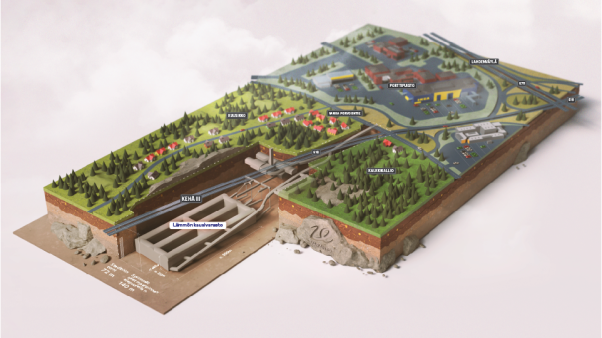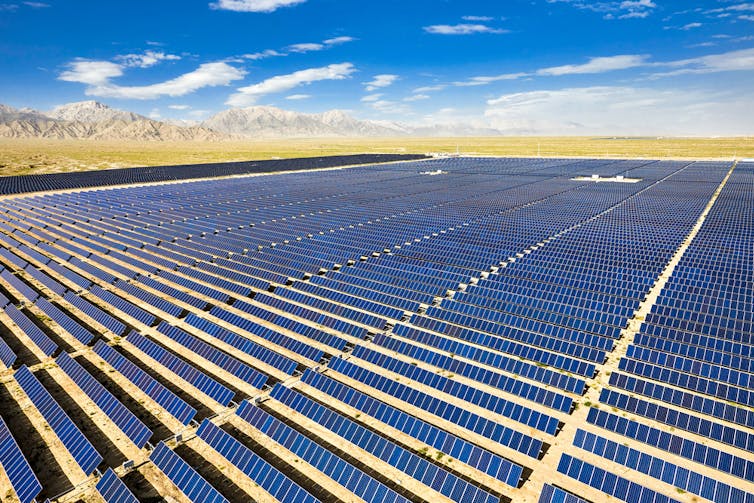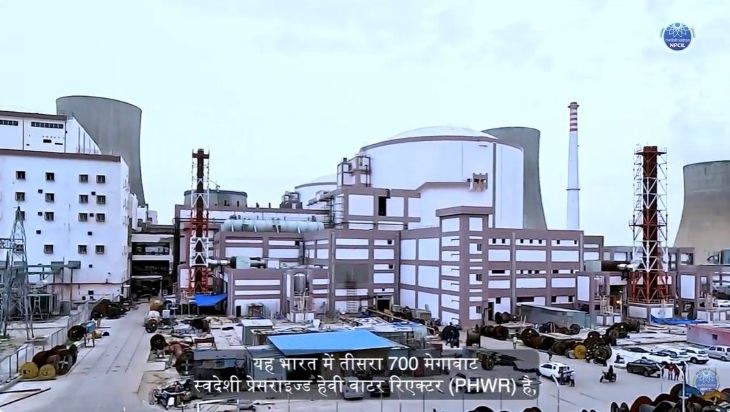 The site is home to two 700 MWe PHWRs (Image: screengrab from NPCIL video)
The site is home to two 700 MWe PHWRs (Image: screengrab from NPCIL video)Friday, 28 March 2025
India welcomes newest Rajasthan unit to the grid
 The site is home to two 700 MWe PHWRs (Image: screengrab from NPCIL video)
The site is home to two 700 MWe PHWRs (Image: screengrab from NPCIL video)Tuesday, 18 March 2025
EU funding for French enrichment plant expansion
_20628.jpg)
Tuesday, 11 February 2025
Japanese reactor cleared for use beyond 50 years
_49215.jpg)
Thursday, 30 January 2025
Brazil's Angra 1 approved for 20-year life extension
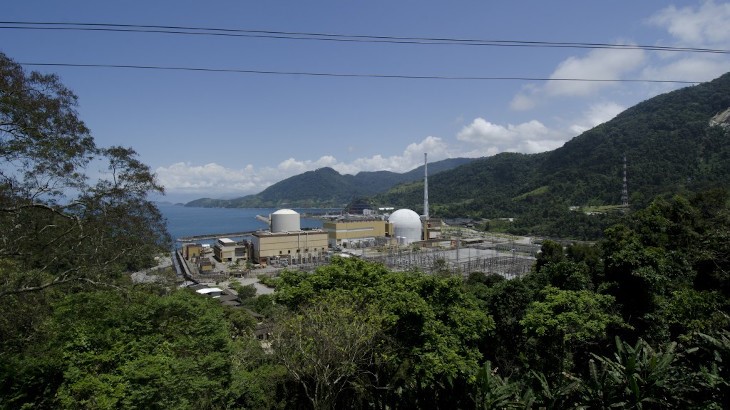
Wednesday, 25 December 2024
Argentina aims to be nuclear pioneer, President Milei says
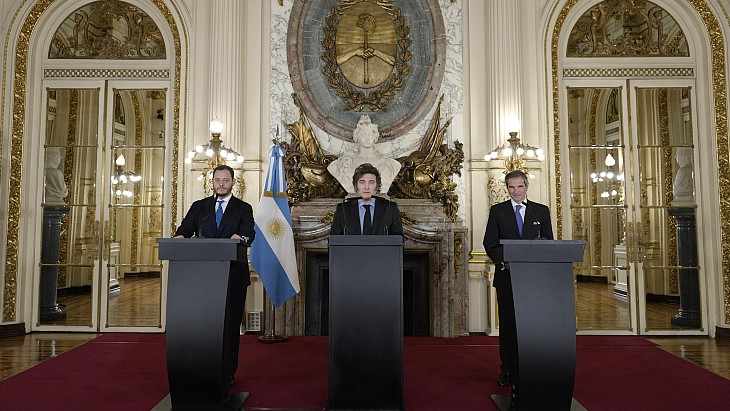
Thursday, 28 November 2024
International banks express support for nuclear expansion
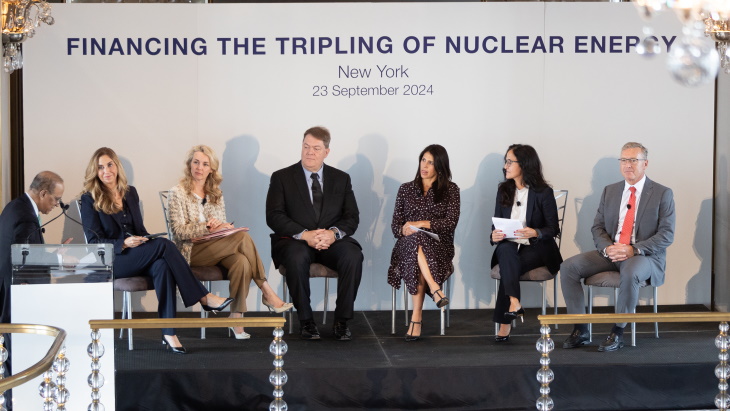
Monday, 11 November 2024
Amazon invests in X-energy, unveils SMR project plans
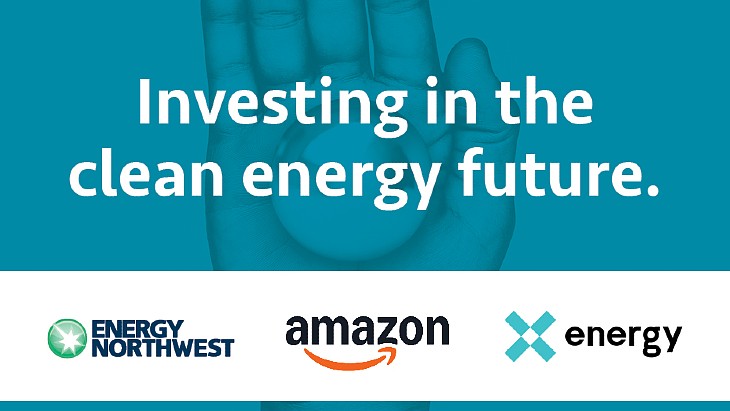
Friday, 1 November 2024
Our expertise can help India achieve 500 GW renewable energy goal by 2030: Pedro Sanchez
Thursday, 24 October 2024
International banks express support for nuclear expansion

Tuesday, 1 October 2024
Indian nuclear joint venture gets go-ahead
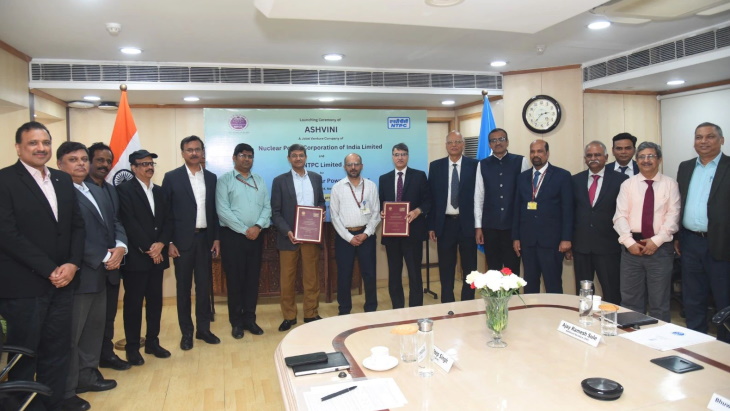 Representatives from NTPC and NPCIL mark the formation of the Ashvini joint venture (Image: NTPC))
Representatives from NTPC and NPCIL mark the formation of the Ashvini joint venture (Image: NTPC))Thursday, 5 September 2024
If Australia wants to fast-track 100% renewables, it must learn from Europe’s risky path

Even after decades encouraging the growth of renewables, we’re still too reliant on coal and gas power stations.
The problem isn’t in our ability to generate clean power. It’s what happens after that. Major roadblocks include the need for 10,000 kilometres of new transmission lines to connect rural renewable farms with city consumers. Another oft-cited reason is the need to store power from renewables so it can be drawn on as needed. This is why the Australian Energy Market Operator sees such a big role for large-scale storage coupled with some flexible gas as a backup.
Last year, renewable investment actually shrank in Australia. Reasons for the slowdown are wide-ranging. Some are local, such as rural communities lobbying against new transmission lines, the need for planning and environmental approvals and the slow pace of creating new regulations. Others are global, such as increased competition for engineers and electricians, clean tech and raw materials.
As climate change worsens, frustration about the slow pace of change will intensify. But when we look around the world, we see similar challenges cropping up in many countries.
 What’s in it for locals? Securing a social license for transmission lines is shaping up as a major source of delay in Australia’s energy transition. David L Young/Shutterstock
What’s in it for locals? Securing a social license for transmission lines is shaping up as a major source of delay in Australia’s energy transition. David L Young/ShutterstockEuropean Union
Transmission line hold-ups are by no means a delay unique to Australia. Data from the International Energy Agency shows building new electricity grid assets takes ten years on average in both Europe and the United States.
In 2022, the European Union introduced laws expressly aimed at speeding up the clean energy transition by fast-tracking permits for renewables, grid investment and storage assets. These investments, the laws state, are:
presumed as being in the overriding public interest […] when balancing legal interests in the individual case.
That is, when the interests of other stakeholders – including local communities and the environment – clash with clean energy plans, clean energy has priority.
Germany has gone further still with domestic laws designed to further streamline planning and approvals and favour energy transition projects over competing interests. These changes were sweetened with financial incentives for communities participating in clean energy projects.
This is a risky path. European leaders have chosen to go faster in weaning off fossil fuels at the risk of inflaming local communities. The size of the backlash became clear in the EU’s elections in June, where populists gained seats and environmental parties lost.
United States
In 2022, the US government passed a huge piece of green legislation known as the Inflation Reduction Act. Rather than introducing further regulations, the US has gone for a green stimulus, offering A$600 billion in grants and tax credits for companies investing in green manufacturing, electric vehicles, storage and so on. To date, this approach has been very effective. But money isn’t everything – new transmission lines will be essential, which means approvals, planning, securing the land corridor and so on.
This year, the US Energy Department released new rules bundling all federal approvals into one program in a bid to accelerate the building of transmission lines across state borders.
Australia could borrow from this. The government’s Future Made in Australia policy package takes its cues from US green stimulus, but at smaller scale. What America’s example shows us is these incentives work – especially when big.
US-style streamlining and bundling of approvals could address delays from overlapping state and federal approvals. Supporting local green manufacturing can create jobs, which in turn encourages community buy-in.
China
Even as Australia’s clean energy push hit the doldrums and emission levels stagnated, China’s staggering clean energy push began bearing fruit. Emissions in the world’s largest emitter began to fall, five years ahead of the government’s own target.
They did this by covering deserts with solar panels, building enormous offshore wind farms, rolling out fast rail, building hydroelectricity, and taking up electric vehicles very rapidly. In 2012, China had 3.4 gigawatts of solar and 61 GW of wind capacity. In 2023, it had 610 GW of solar and 441 GW of wind. It’s also cornered the market in renewable technologies and moving strongly into electric vehicles.
Of course, China’s government has far fewer checks and balances and exerts tight control over communities and media. We don’t often see what costs are paid by communities.
China has also used industrial policy cleverly, with government and industries acting in partnership. In fact, the green push in the US, EU, Australia and other Western jurisdictions takes cues from China’s approach.
There’s still a long road ahead for China. But given its reliance on energy-intensive manufacturing, it’s remarkable China’s leaders have managed to halt the constant increase in emissions.
Acceleration has a cost
These examples show how it is possible to accelerate the energy transition. But often, it comes at a cost.
Costs can be monetary, such as when governments direct funding to green stimulus over other areas. But it can also be social, if the transition comes at the cost of community support or the health of the local environment.
This comes with the territory. Big infrastructure projects benefit many but disadvantage some.
While Australian governments could place climate action above all else as the EU is doing, they would risk community and political blowback. Long-term progress means doing the work to secure local support.
For instance, Victoria’s new Transmission Investment Framework brings communities to the fore, focusing on their role and what they will stand to gain early on.
Yes, this approach may slow the rate at which wind turbines go up and solar is laid down. But it may ensure public support over the long term.
No one said the shift to green energy would be easy. Only that it is necessary, worthwhile – and possible. ![]()
Anne Kallies, Senior Lecturer in Energy Law, RMIT University
This article is republished from The Conversation under a Creative Commons license. Read the original article.
Thursday, 29 August 2024
Australia approves world's 'largest' solar hub
Thursday, 15 August 2024
IsoEnergy reopens US underground uranium mine


Wednesday, 14 August 2024
Canada to turn radioactive sources from Thailand into cancer treatments

Saturday, 29 June 2024
Formula One is moving towards hybrid engines and renewable fuel. Major environmental progress or just ‘greenwashing’?

For the millions of fans who tune into every race, Formula One (F1) is more than just a sport – it’s the apex of aerodynamics, skill and strategy.
Behind the scenes, a quieter but more crucial race against carbon emissions is unfolding.
Given the sport’s substantial carbon footprint, F1 has faced criticism from society and even from its own drivers.
For example, Sebastian Vettel, a four-time F1 world champion, expressed his concerns by stating:
When I get out of the car, of course I’m thinking as well, ‘is this something that we should do, travel the world, wasting resources?‘
In the pursuit of speed and sustainability, F1 teams committed in 2019 to achieving a net zero emissions goal by 2030.
As part of this goal, every team has expressed their intention to use 100% renewable fuel by 2026. F1 has also just announced it will mandate hybrid engines with a 50-50 split between electric and combustion power.
However, it is crucial to consider whether these promises to go greener are achievable or if this commitment is just an attempt to greenwash the sport.
Just how big is F1’s environmental footprint?
According to a report from F1, the sport releases around 256,000 tons of carbon dioxide into the atmosphere every season.
While cars are often the focus, in reality, the behind-the-scenes activities have a larger environmental impact, as a Grand Prix event involves much more than just the cars on the track.
This includes everything from the transportation of teams and equipment to various international venues, to the energy used in setting up and operating the event and waste management.
A Grand Prix event features ten teams, each operating two cars, which results in a total of 20 cars in each race.
F1 cars actually contribute the least to the sport’s emissions, accounting for only about 0.7%.
In 2013, each car used about 160kg of fuel per Grand Prix race. By 2020, this was reduced to 100kg. F1 is now committed to use as little as 70kg of fuel per car by 2026.
Are hybrid engines a potential solution?
The foremost priorities of hybrid engines in Formula One are efficiency and environmental sustainability.
They integrate an internal combustion engine, batteries and an energy recovery system.
Compared to conventional internal combustion engines, the inclusion of batteries allows F1 cars to deliver rapid power more efficiently. The instantaneous torque provided by electric power significantly enhances acceleration out of corners, contributing to overall performance improvements.
Hybrid engines also reduce fuel consumption compared to traditional engines.
The hybrid system includes the Motor Generator Unit-Kinetic (MGU-K) and the Motor Generator Unit-Heat (MGU-H). The MGU-K converts kinetic energy from braking into electrical energy and stored in the battery, which boosts acceleration and speed. The MGU-H uses heat energy from exhaust gases to increase engine power.
This configuration not only conserves fuel but also maximises energy use, thereby reducing carbon emissions and enhancing environmental sustainability.
Will these changes reduce the sport’s environmental impact?
To reduce the environmental impact of F1 cars, fuel plays a major role. F1 started with 10% sustainable fuel (“E10”) – a blend of 10% renewable ethanol and 90% fossil fuel.
From 2026, they are determined to shift from 10% to 100% renewable fuel, which is synthesised by municipal waste or non-food biomass.
However, renewable fuels still produce carbon emissions – burning renewable fuel does release carbon dioxide but the emissions are offset by the carbon dioxide absorbed from the atmosphere during the fuel’s production, rendering it carbon neutral overall.
While the hybrid system will remain in place in 2026, given the complexities and cap on engine-specific costs, modern F1 cars will scrap the MGU-H and solely rely on the MGU-K.
Moreover, F1 is committed to increasing the energy efficiency of MGU-K to harvest more braking energy. Consequently, it aims to increase power output of MGU-K from 120kW to 350kW by 2026, nearly tripling it.
As for its broader carbon footprint, F1 has also pledged to incorporate re-purposing and recycling options for race weekend materials, batteries, and MGU-K. This will help minimise waste and the sport’s carbon footprint.
Because the carbon footprint of F1 cars is relatively small, the sport should focus its efforts on reducing emissions in transportation, logistics and fan activities.
Likewise, hosting Grand Prix races in various countries across different continents requires extensive logistical arrangements and travel. For instance, the F1 racing series in 2023 visited 20 countries across five continents, resulting in significant carbon emissions.
Consequently, F1 should consider hosting races within a single country or at least within a single continent.
Can F1 cars go fully electric?
For the sustainability of the sport, a transition to 100% electric cars is likely in the future. This transition can benefit from the experiences gained with Formula E, which employs fully electric vehicles.
However, several factors must be considered before fully electrifying F1 cars, including regulation changes, battery weight, battery safety and charging infrastructure.![]()
Yasir Arafat, Senior Research Associate (Batteries for EVs and Batteries Recycling), Edith Cowan University; Muhammad Rizwan Azhar, Lecturer of Chemical Engineering, Sustainable Energy and Resources, Edith Cowan University, and Waqas Uzair, Research associate, Edith Cowan University
This article is republished from The Conversation under a Creative Commons license. Read the original article.
Thursday, 20 June 2024
Small is beautiful for federal funds
- The US Department of Energy (DoE) is to help push forward the manufacture of small modular nuclear reactors through new cost-sharing arrangements with private industry to support design and licensing activities.
- Cutaway of NuScale's containment vessel and integrated reactor system (Image: NuScale Power)
- The DoE intends ultimately to fund up to two designs for small modular reactors (SMRs) through a cost-shared partnership which will support first-of-a-kind engineering, design certification and licensing. To that end, it has issued a draft Funding Opportunity Announcement (FOA) to solicit inputs from industry in advance of the full FOA, aiming at a deployment date for the reactors of 2022.
- Small, compact reactors of around 300 MWe in capacity - around a third of the size of a typical commercial nuclear power plant - can potentially offer a range of strengths in terms of safety, construction and siting as well as potential economic benefits. Their modular 'plug and play' nature means that they could be made in factories and transported to generation sites, offering economies of scale and reducing both capital costs and construction times. Their small size makes them suitable for small electric grids and locations that cannot support large reactors, while offering the flexibility to install units individually or as modules in a larger generating complex, adding more modules incrementally as required. As well as using a simpler reactor design, SMRs can incorporate a high level of passive or inherent safety in the event of malfunction.
- US Energy Secretary Steven Chu described the funding as a "significant step" in designing, manufacturing, and exporting small modular reactors.
- "America's choice is clear - we can either develop the next generation of clean energy technologies, which will help create thousands of new jobs and export opportunities here in America, or we can wait for other countries to take the lead." Steven Chu: US Energy Secretary
- Several US companies are involved in the design of SMRs, with development at various stages of advancement. Westinghouse, which is developing its own 200 MWe SMR, has already pledged to take advantage of the DoE's offer. Westinghouse chief technology officer and senior vice president of research and technology Kate Jackson said the company would be applying for the federal funds with a consortium of utilities. "Access to this investment fund helps lower the barrier to market entry for American companies," she said, noting that "virtually all energy sources that feed the national grid" had been developed through public-private research and development partnerships. Indeed, the design certification by the US Nuclear Regulatory Commission of Westinghouse's AP1000 nuclear reactor design, granted in December 2011, was supported through a cost-shared agreement with DoE.
- Other US SMR designs at an advanced stage of development include NuScale Power Inc's 45 MWe NuScale reactor, which is envisaged as being clustered in modules of 12 to form a power plant of around 540 MWe, and Babcock & Wilcox's 160 MWe mPower. The NRC is currently involved in pre-application activities on both designs in anticipation of a design certification application for the NuScale reactor in the first months of 2012, followed by one for the mPower design towards the end of 2013.
- Researched and written by World Nuclear News Small is beautiful for federal funds - World Nuclear News
Tuesday, 4 June 2024
Waste Heat Generated from Electronics to Warm Finnish City in Winter Thanks to Groundbreaking Thermal Energy Project
